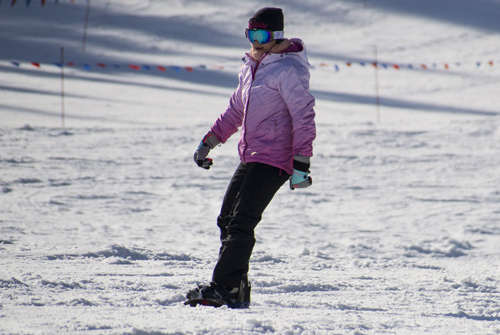The brutally cold weather that swept across much of the country recently may have affected more than your heating bill. Eyes are resilient in the extreme cold, but can still suffer negative effects. Patients may have some unusual complaints, so we must be alert, know the facts, and share the information with our patients.
First, the good news. Our eyes have natural protective mechanisms against cold and wind. Body temperature helps keep the eyes warm, and because of their salinity, tears freeze at a lower temperature than water to act as a kind of ocular antifreeze. Eyelids and lashes also help protect the eye. Even with those protections, however, it is possible for the cornea to freeze in high wind, low temperature conditions. Soldiers, pilots, skiers, bicyclists, ice skaters, snowmobilers and mountaineers are at particular risk.
 |
| Image courtesy of CSG Snowboards |
Then there’s UV exposure. While most often associated with summer, the reflective properties of that pretty white snow effectively double UV exposure, which can result in photokeratitis, commonly called snow blindness. It’s a painful inflammation of the cornea that manifests as tearing, pain, redness, swollen eyelids, headache, a gritty feeling in the eyes, halos around lights, hazy vision, and temporary loss of vision. Patients may not initially realize they have a problem because symptoms may not appear until 6-12 hours after the UV exposure. The condition is treatable, however, and vision usually returns after 18 hours, with the cornea regenerating in 24 to 48 hours.
More good news. It’s easy to protect the eyes against the cold and wind. While patients most often associate the need for sunglasses with summer, it’s critical to protect eyes against the doubled UV exposure from snow. Goggles will protect against the wind, which brings even lower wind chill temperatures with it, and using lubricating drops before going outdoors can slow tear evaporation. Indoors, humidifiers and lubricating drops protect against the effects of dry heat.
After you put on that extra pair of socks, you can learn more about technological advancements and pioneering efforts that improve the high-performance eyewear needed in extreme conditions with our CE, Protecting Our Amazing Eyes, at www.2020mag/ce. Stay warm and safe!













